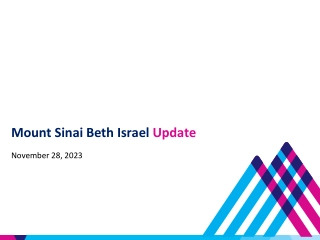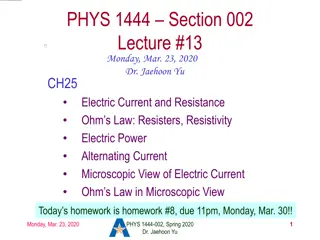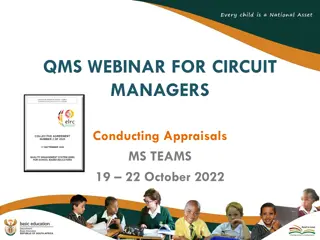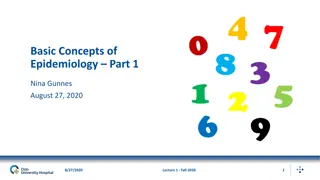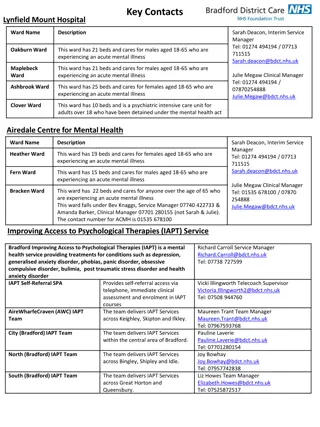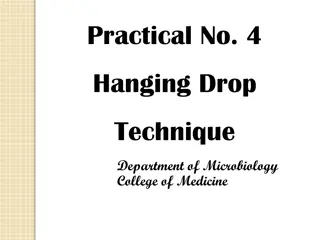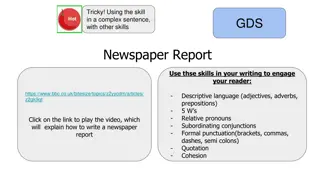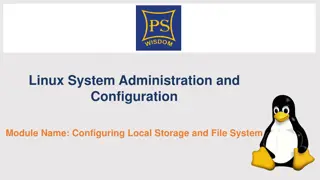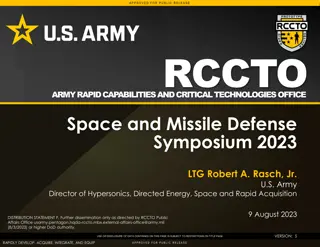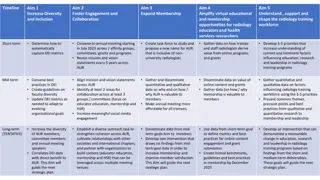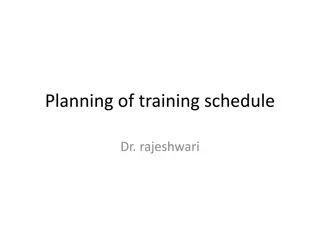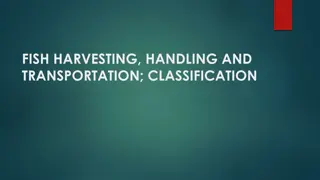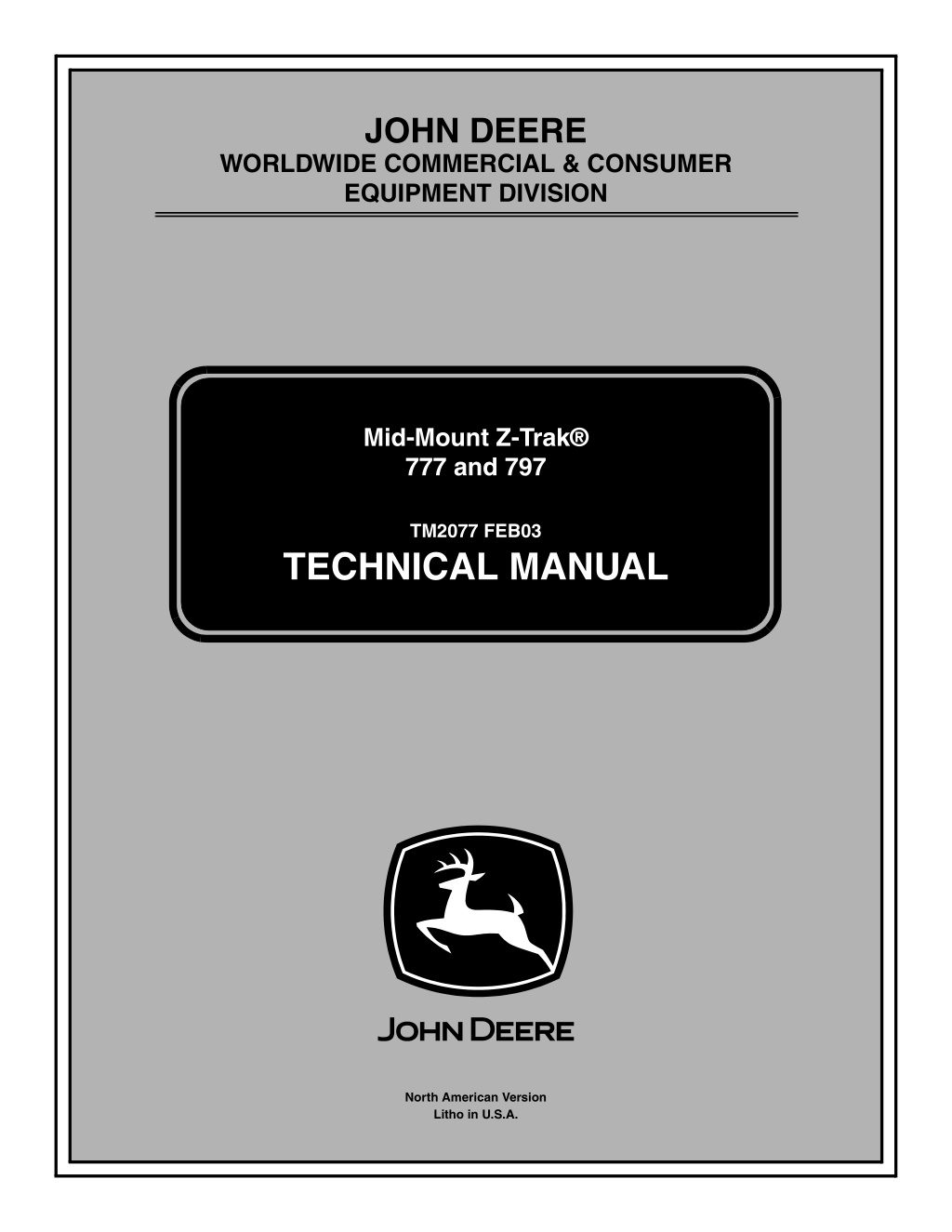
John Deere Mid-Mount Z-Trak 777 Mower Service Repair Manual Instant Download (TM2077)
Please open the website below to get the complete manualnn//
Download Presentation

Please find below an Image/Link to download the presentation.
The content on the website is provided AS IS for your information and personal use only. It may not be sold, licensed, or shared on other websites without obtaining consent from the author. Download presentation by click this link. If you encounter any issues during the download, it is possible that the publisher has removed the file from their server.
E N D
Presentation Transcript
JOHN DEERE WORLDWIDE COMMERCIAL & CONSUMER EQUIPMENT DIVISION 2077 FEB03 Mid-Mount Z-Trak 777 and 797 TM2077 FEB03 TECHNICAL MANUAL North American Version Litho in U.S.A.
INTRODUCTION Manual Description Introduction Safety This technical manual is written for an experienced technician and contains sections that are specifically for this product. It is a part of a total product support program. Specifications and Information The manual is organized so that all the information on a particular system is kept together. The order of grouping is as follows: Engine Table of Contents Specifications General Information Electrical Identification Numbers Tools and Materials Component Location Hydrostatic Power Train Schematics and Harnesses Theory of Operation Brakes Operation and Diagnostics Diagnostics Tests and Adjustments Attachments Repair Other NOTE: Depending on the particular section or system being covered, not all of the above groups may be used. Miscellaneous The bleed tabs for the pages of each section will align with the sections listed on this page. Page numbering is consecutive from the beginning of the Safety section through the last section. We appreciate your input on this manual. If you find any errors or want to comment on the layout of the manual please contact us. All information, illustrations and specifications in this manual are based on the latest information at the time of publication. The right is reserved to make changes at any time without notice. COPYRIGHT 2003 Deere & Co. John Deere Worldwide Commercial and Consumer Equipment Division All rights reserved Previous Editions COPYRIGHT Introduction
SAFETY Be Prepared for Emergencies Safety Recognize Safety Information MIF When you work around fuel, do not smoke or work near heaters or other fire hazards. MIF This is the safety-alert symbol. When you see this symbol on your machine or in this manual, be alert to the potential for personal injury. Store flammable fluids away from fire hazards. Do not incinerate or puncture pressurized containers. Make sure machine is clean of trash, grease, and debris. Follow recommended precautions and safe servicing practices. Do not store oily rags; they can ignite and burn spontaneously. Understand Signal Words A signal word - DANGER, WARNING, or CAUTION - is used with the safety-alert symbol. DANGER identifies the most serious hazards. DANGER or WARNING safety signs are located near specific hazards. General precautions are listed on CAUTION safety signs. CAUTION also calls attention to safety messages in this manual. Replace Safety Signs MIF Be prepared if a fire starts. Keep a first aid kit and fire extinguisher handy. Keep emergency numbers for doctors, ambulance service, hospital, and fire department near your telephone. MIF Replace missing or damaged safety signs. See the machine operator s manual for correct safety sign placement. Safety - 1
https://www.ebooklibonline.com Hello dear friend! Thank you very much for reading. Enter the link into your browser. The full manual is available for immediate download. https://www.ebooklibonline.com
SAFETY Prevent Battery Explosions Avoid High-Pressure Fluids MIF MIF from the top of battery. Battery gas can explode. Keep sparks, lighted matches, and open flame away Escaping fluid under pressure can penetrate the skin causing serious injury. Avoid the hazard by relieving pressure before disconnecting hydraulic or other lines. Tighten all connections before applying pressure. Search for leaks with a piece of cardboard. Protect hands and body from high-pressure fluids. across the posts. Use a voltmeter or hydrometer. Never check battery charge by placing a metal object battery to 16 C (60 F). Do not charge a frozen battery; it may explode. Warm If an accident occurs, see a doctor immediately. Any fluid injected into the skin must be surgically removed within a few hours or gangrene may result. Doctors unfamiliar with this type of injury should reference a knowledgeable medical source. Such information is available from Deere & Company Medical Department in Moline, Illinois, U.S.A. Information may be obtained in the United States and Canada only by calling 1-800-822-8262. Prevent Acid Burns strong enough to burn skin, eat holes in clothing, and cause blindness if splashed into eyes. Sulfuric acid in battery electrolyte is poisonous. It is Avoid acid burns by: a. Filling batteries in a well-ventilated area. Avoid Heating Near Pressurized Fluid Lines b. Wearing eye protection and rubber gloves. Flammable spray can be generated by heating near pressurized fluid lines, resulting in severe burns to yourself and bystanders. Do not heat by welding, soldering, or using a torch near pressurized fluid lines or other flammable materials. Pressurized lines can be accidentally cut when heat goes beyond the immediate flame area. c. Avoiding breathing fumes when electrolyte is added. d. Avoiding spilling or dripping electrolyte. e. Using proper jump start procedure. If you spill acid on yourself: a. Flush your skin with water. b. Apply baking soda or lime to help neutralize the acid. c. Flush your eyes with water for 10-15 minutes. d. Get medical attention immediately. If acid is swallowed: a. Drink large amounts of water or milk. b. Then drink milk of magnesia, beaten eggs, or vegetable oil. c. Get medical attention immediately. Safety - 2
SAFETY Wear Protective Clothing Avoid bodily injury caused by slipping wrenches. Use only service parts meeting John Deere specifications. Park Machine Safely MIF Wear close fitting clothing and safety equipment appropriate to the job. MIF Prolonged exposure to loud noise can cause impairment or loss of hearing. Wear a suitable hearing protective device such as earmuffs or earplugs to protect against objectionable or uncomfortable loud noises. Before working on the machine: 1. Lower all equipment to the ground. 2. Stop the engine and remove the key. Operating equipment safely requires the full attention of the operator. Do not wear radio or music headphones while operating machine. 3. Disconnect the battery ground strap. 4. Hang a DO NOT OPERATE tag in operator station. Service Machines Safely Support Machine Properly and Use Proper Lifting Equipment MIF Tie long hair behind your head. Do not wear a necktie, scarf, loose clothing, or necklace when you work near machine tools or moving parts. If these items were to get caught, severe injury could result. MIF If you must work on a lifted machine or attachment, securely support the machine or attachment. Do not support the machine on cinder blocks, hollow tiles, or props that may crumble under continuous load. Do not work under a machine that is supported solely by a jack. Follow recommended procedures in this manual. Remove rings and other jewelry to prevent electrical shorts and entanglement in moving parts. Use Proper Tools Lifting heavy components incorrectly can cause severe injury or machine damage. Follow recommended procedure for removal and installation of components in the manual. Use tools appropriate to the work. Makeshift tools and procedures can create safety hazards. Use power tools only to loosen threaded parts and fasteners. For loosening and tightening hardware, use the correct size tools. DO NOT use U.S. measurement tools on metric fasteners. Safety - 3
SAFETY Work in Clean Area Remove Paint before Welding or Heating Before starting a job: Avoid potentially toxic fumes and dust. Hazardous fumes can be generated when paint is heated by welding, soldering, or using a torch. Do all work outside or in a well- ventilated area. Dispose of paint and solvent properly. Remove paint before welding or heating. If you sand or grind paint, avoid breathing the dust. Wear an approved respirator. If you use solvent or paint stripper, remove stripper with soap and water before welding. Remove solvent or paint stripper containers and other flammable material from area. Allow fumes to disperse at least 15 minutes before welding or heating. 1. Clean work area and machine. 2. Make sure you have all necessary tools to do your job. 3. Have the right parts on hand. 4. Read all instructions thoroughly; do not attempt shortcuts. Using High-Pressure Washers Directing pressurized water at electronic/electrical components or connectors, bearings, hydraulic seals, fuel injection pumps or other sensitive parts and components may cause product malfunctions. Reduce pressure and spray at a 45 to 90 degree angle. Avoid Harmful Asbestos Dust Avoid breathing dust that may be generated when handling components containing asbestos fibers. Inhaled asbestos fibers may cause lung cancer. Illuminate Work Area Safely Components in products that may contain asbestos fibers are brake pads, brake band and lining assemblies, clutch plates, and some gaskets. The asbestos used in these components is usually found in a resin or sealed in some way. Normal handling is not hazardous as long as airborne dust containing asbestos is not generated. Illuminate your work area adequately but safely. Use a portable safety light for working inside or under the machine. Make sure the bulb is enclosed by a wire cage. The hot filament of an accidentally broken bulb can ignite spilled fuel or oil. Avoid creating dust. Never use compressed air for cleaning. Avoid brushing or grinding material containing asbestos. When servicing, wear an approved respirator. A special vacuum cleaner is recommended to clean asbestos. If not available, apply a mist of oil or water on the material containing asbestos. Keep bystanders away from the area. Work in Ventilated Area Service Tires Safely MIF Engine exhaust fumes can cause sickness or death. If it is necessary to run an engine in an enclosed area, remove the exhaust fumes from the area with an exhaust pipe extension. If you do not have an exhaust pipe extension, open the doors and get outside air into the area. MIF Explosive separation of a tire and rim parts can cause serious injury or death. WARNING: California Proposition 65 Warning proper equipment and experience to perform the job. Do not attempt to mount a tire unless you have the Gasoline engine exhaust from this product contains chemicals known to the State of California to cause cancer, birth defects, or other reproductive harm. the tires above the recommended pressure. Never weld or heat a wheel and tire assembly. The heat can cause an Always maintain the correct tire pressure. Do not inflate Safety - 4
SAFETY increase in air pressure resulting in a tire explosion. Welding can structurally weaken or deform the wheel. Prevent fires. Clean up spilled fuel immediately. where fumes may reach an open flame or spark. Do not store machine with fuel in tank in a building hose long enough to allow you to stand to one side and NOT in front of or over the tire assembly. Use a safety cage if available. When inflating tires, use a clip-on chuck and extension discharge. Use only non-metal, portable fuel containers approved by the Underwriter s Laboratory (U.L.) or the American Society for Testing & Materials (ASTM). If using a funnel, make sure it is plastic and has no screen or filter. Prevent fire and explosion caused by static electric rims or missing lug bolts and nuts. Check wheels for low pressure, cuts, bubbles, damaged Avoid Injury from Rotating Blades, Augers, and PTO Shafts MIF ungrounded fuel container. Remove the fuel container from the bed of a vehicle or the trunk of a car and place on the ground away from the vehicle before filling. Keep nozzle in contact with container opening while filling. Static electric discharge can ignite gasoline vapors in an MIF Keep hands and feet away while machine is running. Shut off power to service, lubricate, or remove mower blades, augers, or PTO shafts. beds and refuel them on the ground. If this is not possible, use a portable, plastic fuel container to refuel equipment on a truck bed or trailer. When practical, remove equipment from trailers or truck Handling Fuel Safely Methanol is harmful to your health and to the environment. For gasoline engines, do not use gas with methanol. Fuel and fuel vapors are highly flammable: MIF is near an open flame or sparks, or when engine is running. Stop engine and allow to cool before filling. Do not refuel machine while you smoke, when machine running. Never remove the fuel cap or add fuel with the engine enclosed area. Fill fuel tank outdoors. Never fill fuel tank or drain fuel from a machine in an Safety - 5
SAFETY Handle Chemical Products Safely Live with Safety MIF Direct exposure to hazardous chemicals can cause serious injury. Potentially hazardous chemicals used with John Deere equipment include such items as lubricants, coolants, paints, and adhesives. MIF Before returning machine to customer, make sure machine is functioning properly, especially the safety systems. Install all guards and shields. A Material Safety Data Sheet (MSDS) provides specific details on chemical products: physical and health hazards, safety procedures, and emergency response techniques. Check the MSDS before you start any job using a hazardous chemical. That way you will know exactly what the risks are and how to do the job safely. Then follow procedures and recommended equipment. Dispose of Waste Properly Improperly disposing of waste can threaten the environment and ecology. Potentially harmful waste used with John Deere equipment includes such items as oil, fuel, coolant, brake fluid, filters, and batteries. Use leakproof containers when draining fluids. Do not use food or beverage containers that may mislead someone into drinking from them. Do not pour waste onto the ground, down a drain, or into any water source. Inquire on the proper way to recycle or dispose of waste from your local environmental or recycling center, or from your John Deere dealer. Safety - 6
HYDROSTATIC POWER TRAIN TESTS AND ADJUSTMENTS 10.Turn key switch to STOP position. Symptom: Excessive Noise 11.Remove jack stands. (9) Are the wheel motors operating properly? 12.Check oil level at hydraulic oil reservoir. Add oil as needed. No - Inspect wheel motors. (See Disassemble and Assemble Wheel Motor on page 305.) Checking and Adjusting Motion Control Linkages Tests and Adjustments Bleed Hydraulic System Reason To ensure that the machine does not move when the control levers are in the NEUTRAL position while the engine is running. c CAUTION: Avoid injury! Do not attempt this adjustment unless you are a qualified and properly trained technician. Reason To ensure that air is purged from the hydraulic system after the hydraulic hoses have been disconnected. Procedure 1. Park machine safely. 2. Check level of hydraulic oil. Add oil as needed. (See Hydrostatic Transmission and Hydraulic Oil on page 22.) Checking Motion Control Linkages NOTE: Check and adjust motion control linkages with the machine parked on a hard, level surface. c CAUTION: Avoid injury! Engine exhaust fumes can cause sickness or death: IMPORTANT: Avoid damage! To prevent damage to hydrostatic pumps, never bleed or purge a pump under load. Always bleed with drive wheels off the ground. 3. Use a safe lifting device to raise the drive wheels off the ground. Support with jack stands. enclosed area, use an exhaust pipe extension to remove the fumes. If it is necessary to run an engine in an 4. Open both bypass valves one full turn. c CAUTION: Avoid injury! Engine exhaust fumes can cause sickness or death. area. Always try to work in a well ventilated If it is necessary to run an engine in an enclosed area, use an exhaust pipe extension to remove the fumes. 1. Start engine. 2. Set throttle lever to the fast position. 3. Unlock park brake. Always work in a well-ventilated area. 4. If the rear drive wheels begin to creep, an adjustment is required. 5. Start engine and run at 3/4 speed. 6. Push both control levers to full forward and hold for 5 seconds. Pull both control levers to full reverse and hold for 5 seconds. Repeat 2 additional times. 7. With engine running at 3/4 speed, close both bypass valves and tighten to specification. Tighten jam nuts to specification. 8. Push both control levers to full forward and hold for 5 seconds. Pull both control levers to full reverse and hold for 5 seconds. Repeat 2 additional times. NOTE: It may be necessary to repeat steps 6-8 until all air has been purged from system. 9. Adjust neutral and tracking. (See Checking and Adjusting Motion Control Linkages on page 279.) Hydrostatic Power Train Tests and Adjustments - 279
HYDROSTATIC POWER TRAIN TESTS AND ADJUSTMENTS Adjusting Motion Control Linkages NOTE: Right and left control levers can be adjusted independently. 1. Stop engine and lock park brake. A D MX18077 8. Activate operator seat safety switch. NOTE: To prevent damage to the bottom of the operator seat, cover end of wood block with a rag. MX18041 (13-15 in.) long between the foot plate and the center of the seat. Place a wood block (D) approximately 33-38 cm 2. Move both motion control levers (A) to the neutral lock position. 3. Adjust seat fully rearward. 9. Start engine. 4. Lift and secure operator seat in the raised position. 10.Set throttle to the fast position. c CAUTION: Avoid injury! Help prevent serious personal injury when performing this service procedure. Keep hands, feet and clothing away from rotating tires. B 11.Unlock park brake. C MX18076 5. Remove support rod (B) from side of seat frame. D Remove cotter pin and washer (C). 6. Tilt seat forward to rest on front frame. 7. Raise rear of machine with a safe lifting device. Support with wood blocks or jackstands. freely. Rear drive wheels must have the ability to rotate MX18078 12.Locate left and right motion control linkages (D). 13.Be sure the right motion control lever is in the neutral lock position. adjust the motion control linkage: The right drive wheel must not turn. If it does turn, Hydrostatic Power Train Tests and Adjustments - 280
HYDROSTATIC POWER TRAIN TESTS AND ADJUSTMENTS Check and Adjust Control Damper Neutral Reason To ensure that the control levers return to the NEUTRAL position. E F Check Procedure G 1. Park machine safely. MX18078 a. Loosen hex nut (E) and hex nut (G) on each end of the center link (F). b. Adjust center link (F) until the wheel stops rotating completely. A c. Tighten hex nuts (E and G). 14.Move the right motion control lever completely rearward in the slot and release lever. The lever should return back to the neutral position (completely centered in the slot). wheel does not completely stop rotating, a damper mount adjustment is necessary: The drive wheel must stop completely. If the drive MX10325 2. Pull both control levers back to the REVERSE position. specifications. Adjust damper in slot as necessary; tighten nut to 3. Release the levers. The levers should return to the NEUTRAL position (lever centered in the NEUTRAL LOCK slot [A]) where they can be moved to the NEUTRAL LOCK position without interference with the frame. 15.Move the right motion control lever completely forward and rearward in the slot and then back to the neutral lock position. Results wheel does not completely stop rotating, repeat steps12 and 13. The drive wheel must stop completely. If the drive If control levers do not return as described, continue to Adjustment Procedure. 16.Repeat procedure to adjust the left motion control linkage. Adjustment Procedure 1. Move control levers to NEUTRAL LOCK position. Result: Drive wheels do not rotate when in neutral lock position or when motion control levers return to central position in slot. 2. Raise and latch seat platform. 17.Stop engine. A 18.Move both motion control levers to the neutral lock position. 19.Remove wood block from between foot plate and the operator seat. 20.Lower machine. B 21.Install support rod to side of seat frame with cotter pin and washer. 22.Lower seat. MX18076 3. Remove lock pin and washer (B) and support rod (A) from the seat bracket. Specifications Damper Nut Torque . . . . . . . . . . . . . . . .20 N m (15 lb-ft) 4. Tilt the seat forward and allow to rest against the vehicle frame. Hydrostatic Power Train Tests and Adjustments - 281
HYDROSTATIC POWER TRAIN TESTS AND ADJUSTMENTS Checking and Aligning Motion Control Levers NOTE: Right and left control dampers can be adjusted independently. Check Alignment 5. Move the right control lever from the NEUTRAL LOCK to the NEUTRAL position. 1. Park machine on a hard, level surface and set park brake. 6. Pull control lever to REVERSE position and release. C D A E F B MX18079 2. Move both motion control levers (A) forward. G 3. Check levers for equal alignment. recommended gap is 3-6 mm (1/8-1/4 in.). Check gap (B) between the levers. The MX18169 7. Loosen lock nut (E). Move damper pivot (F) in slot of linkage lever (G) until control lever (C) is aligned with NEUTRAL LOCK position (D). NOTE: If the ends of the levers strike against each other while in the neutral position, move the levers to the neutral lock position and carefully bend them outward. Move them back to the neutral position and check for the recommended gap of 3-6 mm (1/8-1/4 in.). 8. Tighten lock nut (E). 9. Pull control lever to REVERSE position and release. Control lever should return to NEUTRAL position. adjustment is necessary. If positions of the control levers are unequal, an 10.Repeat adjustment as necessary. Alignment Procedure NOTE: When properly adjusted, the control levers will return to the NEUTRAL position from the REVERSE position when the control levers are released, and reverse movement will stop. 1. Adjust position of motion control levers: 11.Repeat adjustment procedure for the LEFT control lever. Specifications Damper Nut Torque . . . . . . . . . . . . . . . 20 N m (15 lb-ft) C MX18080 Loosen cap screws (C). position within tab slots until levers are aligned. Slide both levers forward or rearward to desired Tighten cap screws. Specifications Control Lever Tip Clearance . . . . . 3-6 mm (1/8-1/4 in.) Hydrostatic Power Train Tests and Adjustments - 282
HYDROSTATIC POWER TRAIN TESTS AND ADJUSTMENTS Check and Adjust Neutral Lock Effort Adjustment Procedure Reason C To ensure that control levers will lock into neutral position. B Special or Required Tools Tool Name Tool No. Tool Use Spring Scale NA Used to check steering lever to neutral lock effort. Procedure MX6180 1. Park machine safely. Picture Note: Right Console and Fuel Tank Removed for Clarity of Photo 2. Move control levers to neutral position. 1. Tighten or loosen lock nut (B) to obtain an even pull within specification. A 2. If effort adjustment cannot be achieved, tighten or loosen lock nuts (C) 1/8 turn and repeat step 1. Specifications Control Lever Pull Effort . . . . . 58-80 N (13-18 lb-force) MX6179 3. Attach an appropriate spring scale (A) to the top of the control lever. 4. Using spring scale, slowly pull control lever outward toward NEUTRAL LOCK position. Read pull effort while lever is moving. Reading on spring scale should be within specification. Results If reading is not within specified range, continue to Adjustment Procedure. Hydrostatic Power Train Tests and Adjustments - 283
HYDROSTATIC POWER TRAIN TESTS AND ADJUSTMENTS Test Hydrostatic Pump Flow c CAUTION: Avoid injury! Escaping fluid under pressure can penetrate the skin causing serious injury. Avoid the hazard by relieving pressure before disconnecting hydraulic or other lines. Tighten all connections before applying pressure. Search for leaks with a piece of cardboard. Protect hands and body from high-pressure fluids. Test Conditions: Drive wheels removed. Park brake released. Hydrostatic pump bypass valves fully closed. Engine at FAST idle. Directional control lever in FORWARD position. Procedure If an accident occurs, see a doctor immediately. Any fluid injected into the skin must be surgically removed within a few hours or gangrene may result. Doctors unfamiliar with this type of injury should reference a knowledgeable medical source. Such information is available from Deere & Company Medical Department in Moline, Illinois, U.S.A. Information may be obtained in the United States and Canada only by calling 1-800-822-8262. 1. Park machine safely. 2. Remove drive wheels. Block remaining tires to prevent machine from moving. NOTE: Note positions of lines to ensure correct installation. A NOTE: Two persons may be required to perform this test. If unavailable, disconnect seat switch harness connector and install a jumper wire across seat switch terminals in main harness connector. Reason To determine if the hydrostatic pump or wheel motor is faulty. Proper operation of the hydrostatic pump indicates a faulty wheel motor. MX18172 3. Disconnect lines (A) at wheel motor for pump being tested. Special or Required Tools IMPORTANT: Avoid damage! Plug lines to the wheel motors to prevent system contamination. Tool Name Tool No. Tool Use Bi-Directional Pressure Flow Meter Hydro Gear 70661a Used to measure hydrostatic pump flow and pressure. C D Adapter Fitting (2 used) 38H1279 Used to connect test hoses to hydrostatic lines. B O-Ring (4 required) T77857 Used on adapter fittings. a. See Service Bulletin 02-11-65-02 for additional information. MX18173 4. Right Pump: Disconnect lines (D) from pump, and remove lines. DO NOT remove adapters from pump. Hydrostatic Power Train Tests and Adjustments - 284
HYDROSTATIC POWER TRAIN REPAIR Left Pump: Remove line clamp (B) and disconnect lines (C) from pump. Remove lines. DO NOT remove adapters from pump. c CAUTION: Avoid injury! Ensure all fittings and hoses are attached securely. This test is being performed on the machine s high pressure system. 9. Subtract the first reading from the second and record the difference. Compare your value to the specification. Results hydrostatic pump. (See Remove and Install Hydrostatic Pump on page 291.) If pump flow is not within specification, repair or replace wheel motor. (See Remove and Install Wheel Motor on page 304.) If pump flow is within specification, repair or replace NOTE: Hydro Gear 70661 Bi-Directional Pressure Flow Meter can be connected to the pump for use in either direction. Specifications Hydrostatic Pump Flow Differential (Max) . . . . . . . . . . . . . . 5.7 L/min (1.5 gpm) 5. Connect hoses of Hydro Gear 70661 Bi-Directional Pressure Flow Meter to pump. Repair Perform Test 1. Tighten all fittings. Remove and Install Hydrostatic Pump Drive Belt c CAUTION: Avoid injury! Help prevent bodily injury due to entanglement in a belt or sheave. Stop engine and wait for all moving parts to stop. E IMPORTANT: Avoid damage! Incorrect drive belt tension will cause reduced belt life or additional system noise. MX18170 Checking Belt 2. Turn load knob (E) on tester fully counterclockwise. c CAUTION: Avoid injury! Engine exhaust fumes can cause sickness or death. If it is necessary to run machine in an enclosed area, use an exhaust pipe extension to remove the fumes. 1. Stop engine and lock park brake. 2. Lift and secure operator seat in the raised position. A 3. Start the engine and bring engine speed to FAST idle. 4. Operate hydrostatic drive until system is at normal operating temperature. Normal range is 70-90 C (158- 194 F). 5. Move the control arm to the full FORWARD position. 6. Turn the load knob on the tester CLOCKWISE to increase pressure to 2068 kPa (300 psi). Record the tester reading. MX18072 3. Lift and remove primary radiator screen (A). 7. Continue to turn load knob CLOCKWISE until pressure reading is at 7584 kPa (1100 psi). Again, record tester reading. 8. Move the control lever to neutral, stop engine, and turn load knob on tester fully counterclockwise. Hydrostatic Power Train Repair - 285
HYDROSTATIC POWER TRAIN REPAIR Replacing Belt A B B MX18073 4. Remove drive belt guard (B). MX18074 1. Place a 1/2-inch breaker bar (A) into square hole of idler bracket. Rotate idler bracket (B) to remove tension from drive belt. 2. Remove belt from drive sheaves and idler sheave. IMPORTANT: Avoid damage! Be certain that belt is properly aligned with grooves in sheaves. C MX18094 5. Inspect belt (C) for excessive wear, damage or stretching while in position on the transmission sheaves and drive belt tensioner sheave. NOTE: Measure spring length from outside of one loop to the outside of the loop on the opposite end. MX18114 3. Install belt onto drive sheaves and idler sheave as shown. 4. Adjust tension spring length. (See Adjust Drive Belt Tension on page 286.) D 5. Install drive belt guard and radiator screen. 6. Lower operator seat. Adjust Drive Belt Tension 1. Raise operator seat and secure with support rod. 2. Remove primary radiator screen and belt guard. MX18114 6. Measure length of tension spring (D). Length should be within specifications. Adjust if necessary. (See Adjust Drive Belt Tension on page 286.) Hydrostatic Power Train Repair - 286
HYDROSTATIC POWER TRAIN REPAIR C A B MX18114 3. Loosen jam nut (A). NOTE: Measure spring length from outside of one loop to the outside of the loop on the opposite end. 4. Adjust stand-off nut (B) until length of spring (C) is to specifications. 5. Hold stand-off nut and tighten jam nut securely. 6. Install drive belt guard and radiator screen. 7. Lower operator seat. Specifications Hydrostatic Pump Drive Belt Tension Spring Length . . . . 188-192 mm (7.40-7.56 in.) Hydrostatic Power Train Repair - 287
HYDROSTATIC POWER TRAIN REPAIR Repair Control Linkage A B V U T P S E C D Q R N O F L M G H K I J MX18214 Picture Note: Quantities Shown Are Per Side Hydrostatic Power Train Repair - 288
HYDROSTATIC POWER TRAIN REPAIR A - Cap Screw B - Pivot Bar C - Grip D - Control Lever E - Cap Screw (2 used) F - Cap Screw (2 used) G - Arm H - Carriage Bolt (3 used) I - Bushing (4 used) J - Lock Nut (5 used) K - Left-Hand Bracket L - Lock Nut (2 used) M - Cap Screw N - Damper O - Right-Hand Bracket P - Cap Screw Q - Pump Arm R - Lock Nut S - Jam Nut (Right-Hand Thread) T - Rod U - Jam Nut (Left-Hand Thread) V - Ball Joint NOTE: Left control lever mechanism shown. Right control lever mechanism is the same. needed. Inspect all parts for wear or damage. Replace parts as Motion Control Levers on page 282.) Adjust control lever height. (See Checking and Aligning Motion Control Linkages on page 279.) Adjust control linkage. (See Checking and Adjusting Hydrostatic Power Train Repair - 289
Suggest: If the above button click is invalid. Please download this document first, and then click the above link to download the complete manual. Thank you so much for reading
HYDROSTATIC POWER TRAIN REPAIR Repair Hydrostatic Pump Drive Belt Tensioner Assembly B E A D C C H G L I M F K J MX18213 A - Carriage Bolt B - Spacer C - Bearing (2 used) D - Tension Bracket E - Lubrication Fitting F - Lock Nut (2 used) G - Bushing H - Spring I - Tension Adjustment Bolt J - Sheave K - Cap Screw L - Stand-Off Nut M - Flange Nut needed. Inspect all parts for wear or damage. Replace parts as page 22.) Apply grease to lubrication fitting. (See Grease on Hydrostatic Power Train Repair - 290
https://www.ebooklibonline.com Hello dear friend! Thank you very much for reading. Enter the link into your browser. The full manual is available for immediate download. https://www.ebooklibonline.com



